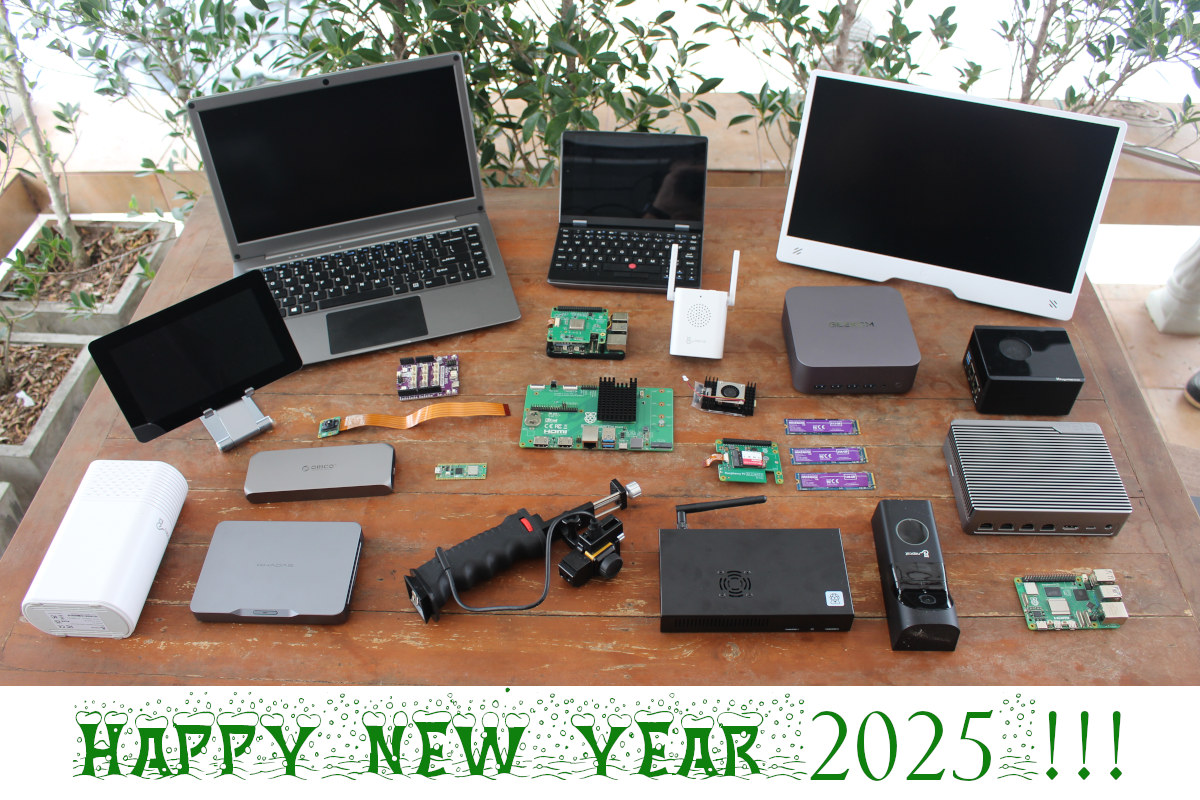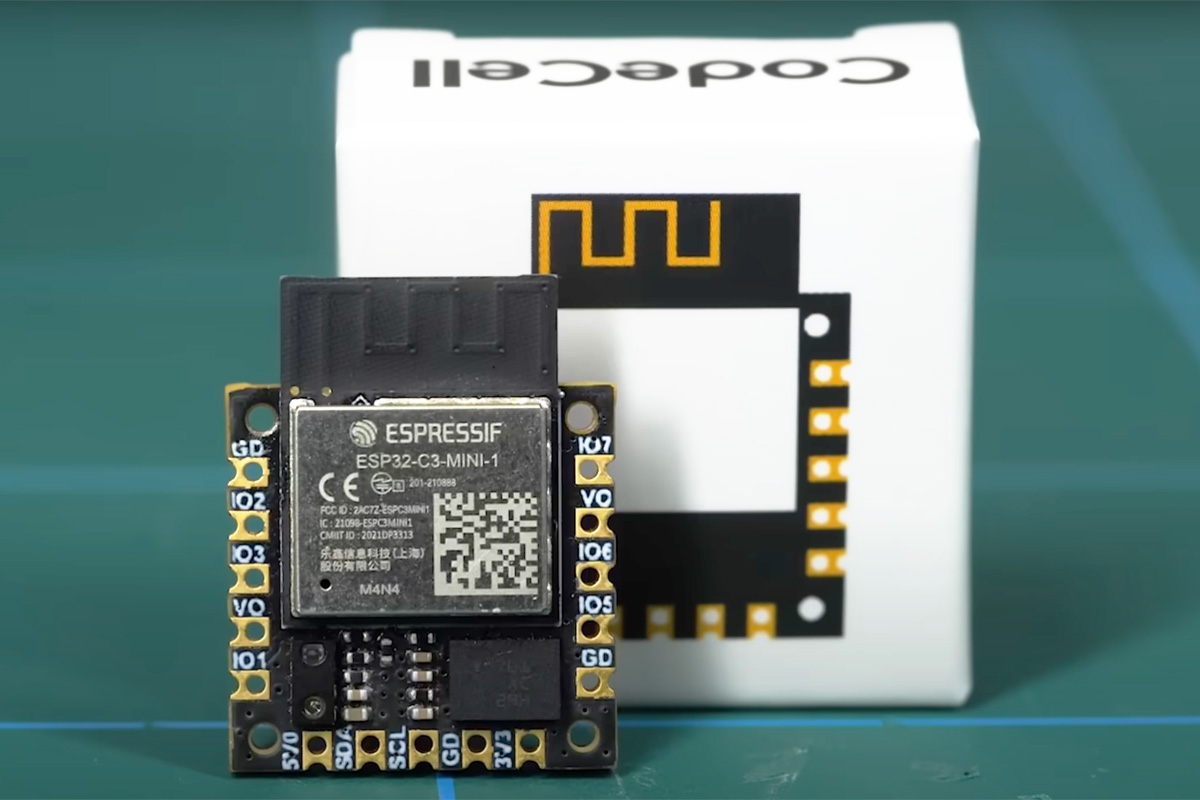Chinese power supply company, SHARGE, has launched a pair of GPT-4o-powered smart glasses with a 16-megapixel camera capable of capturing 4K photos and 1080p videos. Like the Looktech AI glasses and Meta Ray-Ban series, the Loomos AI smart glasses have no onboard display. Instead, they feature a microphone array, onboard speakers, and side buttons for user control and feedback. The Loomos glasses are powered by a 2.0Ghz UNISOC quad-core processor and come integrated with the multi-modal GPT-4o for real-time AI assistance. The stated battery life is much more impressive than the competition at 40 hours of standby time (from a 450mAh battery). The company also offers a 6,500mAh neckband power bank for uninterrupted all-day wearing. The company promises security and privacy with the glasses. Data is processed anonymously with TLS encryption and users retain full control of their data. The glasses also include an indicator light to alert people around […]
STMicro’s STEVAL-MKI109D evaluation board supports all ST MEMS sensors with a DIL24 socket
STMicroelectronics has introduced the STEVAL-MKI109D a MEMS sensor evaluation board, designed to test and optimize STMicro’s MEMS sensors for various applications, including industrial automation, smart agriculture, and consumer electronics. Built around the STM32H563ZI Arm Cortex-M33 MCU this development board features I²C, I3C, and SPI interfaces, along with a TDM interface for high-speed sensor data communication. The board is also compatible with STMicro MEMS DIL24 adapter boards, which makes it easy for engineers to test different sensors. Additionally, it has software-adjustable power circuitry (0–3.6V), and onboard power monitoring for accurate analysis of sensor performance. STEVAL-MKI109D specifications Main MCU – STMicro STM32H563ZI Arm Cortex-M33 MCU with DSP and FPU Storage – MicroSD card slot Sensors – Supports all STMicro MEMS DIL24 compatible adapter boards Interfaces – I²C, I3C, SPI, TDM USB – USB Type-C connector for power and programming Misc Onboard J6 connector for STM32 programming and debugging Onboard J9 connector for […]
GuRu’s modular wireless power transfer system can power a drone indefinitely
California-based company GuRu Wireless has recently developed and showcased a scalable and modular wireless power transfer system that is capable of delivering power to a high-power device up to several kilowatts, such as a drone, from up to 30 feet away (a little over 9 meters). They also mention that the system can power low-power devices, like LEDs and consumer electronics, over distances of several kilometers. It’s quite an extension to the GuRu’s desk-range wireless power evaluation kit we covered in 2020. The system uses 24 GHz high-frequency millimeter-wave radio signals to deliver energy over long distances without needing batteries or tethered systems. GuRu’s system uses a phased array transmitter with proprietary RFICs, to precisely deliver power to the receiver called the Recovery Unit (RU). In a recent demonstration video, GuRu Wireless showcased their wireless power transfer system by powering a drone from 30 feet away, operating it continuously for […]
FOSDEM 2025 schedule – Embedded, Open Hardware, RISC-V, Edge AI, and more
FOSDEM 2025 will take place on February 1-2 with over 8000 developers meeting in Brussels to discuss open-source software & hardware projects. The free-to-attend (and participate) “Free and Open Source Software Developers’ European Meeting” grows every year, and in 2025 there will be 968 speakers, 930 events, and 74 tracks. Like every year since FOSDEM 2015 which had (only) 551 events, I’ll create a virtual schedule with sessions most relevant to the topics covered on CNX Software from the “Embedded, Mobile and Automotive” and “Open Hardware and CAD/CAM” devrooms, but also other devrooms including “RISC-V”, “FOSS Mobile Devices”, “Low-level AI Engineering and Hacking”, among others. FOSDEM 2025 Day 1 – Saturday 1 10:30 – 11:10 – RISC-V Hardware – Where are we? by Emil Renner Berthing I’ll talk about the current landscape of available RISC-V hardware powerful enough to run Linux and hopefully give a better overview of what to […]
CNX Software’s 2024 Year in review, website statistics, and what to expect in 2025
That’s it! 2024 is almost over, and it’s time to reflect on what happened during the year. So I’ll look at the highlights of 2024, share some CNX Software website traffic statistics, and speculate on what may be ahead of us in 2025. Looking back at 2024 Raspberry Pi was super active this year with 22 product launches that included boards and modules like the Raspberry Pi 5 with 2GB RAM, Raspberry Pi Pico 2 and Pico 2 W, Raspberry Pi CM5, expansion modules like the Raspberry Pi AI camera, AI HAT+, and M.2 HAT+, new accessories such as the Raspberry Pi Touch Display 2 and the Raspberry Pi Monitor, and the new Raspberry Pi 500 keyboard PC among others. As usual, there was also plenty of announcement of accessories from third parties, and some boards with the new Raspberry Pi RP2350 Arm/RISC-V microcontroller. There weren’t any ground-breaking Arm processors […]
u-blox UBX-M10150-CC – A tiny GNSS receiver chip for wearables with 10mW power consumption
u-blox has launched the UBX-M10150-CC GNSS receiver chip tailored for wearables such as sports and smartwatches thanks to its tiny size (2.39 x 2.39mm) and an ultra-low power consumption of just 10mW. The chip supports GPS, Galileo, BeiDou, and QZSS/SBAS constellations and features LEAP (Low Energy Accurate Positioning) technology for efficient and accurate positioning up to a 1.5m range. u-blox UBX-M10150-CC specifications: Receiver type – u-blox M10 engine GNSS technology GPS L1 C/A, QZSS L1 C/A/S, BeiDou B1I/B1C, Galileo E1B/C SBAS L1 C/A – WAAS, EGNOS, MSAS, GAGAN Navigating Frequency – Up to 2 Hz (LEAP) and up to 12 Hz (High Performance) Accuracy – 1.5 m CEP (Circular Error Probable), horizontal position Response Time – Cold Start (28s), Hot Start (1s), Aided Start (1s) Sensitivity Tracking & Navigation (-159 dBm), Reacquisition (-158 dBm) Cold Start (-148 dBm), Hot Start (-159 dBm) Tracking features LEAP technology Data batching – […]
STMicro’s low-power ST1VAFE3BX AI biosensor integrates biopotential signal monitoring and motion tracking
STMicroelectronics (STMicro) has announced the ST1VAFE3BX biosensor, a highly integrated chip that combines “cardio and neurological sensing with motion tracking and embedded AI functionalities,” and is targeted at healthcare and fitness wearables. The ST1VAFE3BX biosensor chip integrates biopotential inputs with an accelerometer and a machine learning core for reduced power consumption. It features a complete vertical analog front end (vAFE) for simplified detection of vital signs in electrocardiography, electroencephalography, and other healthcare monitoring applications. Inertial sensing by the accelerometer is synchronized with biopotential sensing “to infer any link between measured signals and physical activity.” The integrated machine-learning core (MLC) and finite state machine (FSM) allow for ultra-low-power and accurate biopotential input recognition at a degree of responsiveness that is reportedly faster than the current industry standard. The ST1VAFE3BX is aimed at applications in healthcare and fitness wearables such as smartwatches, smart patches, sports bands, connected rings, and smart glasses. It […]
CodeCell is a ESP32-C3 mini development board for robots, wearables, smart home projects
Engineer and YouTuber Carl Bugeja recently developed CodeCell, a tiny ESP32-C3 development board designed as the brain for robots, wearables, and smart home devices. This module features a nine-axis inertial measurement unit (IMU) for motion fusion and an optional VCNL4040 light sensor. It includes a USB Type-C port for data and power as well as a lithium-polymer battery with a charging circuit. Measuring just 18.5 x 18.5mm this compact board is even smaller than other tiny ESP32 development boards such as Waveshare’s ESP32-S3-Zero and Seeed Studio’s XIAO ESP32S3. However, the Epi C3 is smaller at 23 x 12.75 mm, and so are the Unexpected Maker NANOS3 (25 x 10 mm) and Unexpected Maker OMGS3 (28 x 11 mm). CodeCel ESP32-C3 mini development board specification Microcontroller – ESP32-C3 RISC-V MCU 160MHz 32-bit RISC-V processor core 400kB SRAM, 4MB flash storage Wi-Fi 4 and Bluetooth Low Energy (BLE) connectivity Sensors Vishay VCNL4040 light […]










